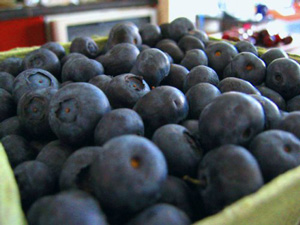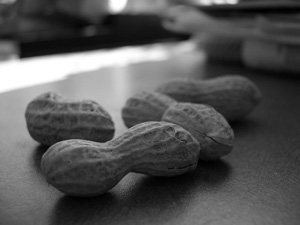- Westside Acupuncture and Wellness Center
- Mon - Fri7:00a - 8:00p
Follow Us!
-
Nutrition
3. Dampness and Phlegm
If the solid portions of food are jam-packed into the stomach or their digestion is impaired by cold, chilled foods and liquids or if too many hard-to-digest foods are eaten, stagnant food may accumulate in the stomach. The stomach tries all the harder to burn these off and resembles a car stuck in overdrive. It becomes hotter in an attempt to burn off accumulation. This often results in the stomach becoming chronically overheated. This, in turn, causes the stomach to register hunger, which, in Chinese medicine, is a sensation of the stomach’s heat. This hunger then results in eating more and more and a vicious cycle is created. Overeating begets stagnant food, which begets stomach heat which reinforces overeating. Further, persistent stomach heat may eventually waste stomach yin or fluids causing a chronic thirst and preference for cold drinks and chilled foods.
If the liquid portions of food and drink jam the transporting and transforming functions of the spleen, these may accumulate as dampness. This plethora of water inhibits the spleen’s warm transforming function in the same way that water inhibits or douses fire. Over time, this accumulated dampness may mix with stagnant food and congeal into phlegm, which further blocks the entire system and retards the blood circulation throughout the whole body.
Different people’s digestion burns hotter than others. Those with a robust constitution and strong ming men, or fire of life, tend to have a strong digestion. These people can often eat more in general and more chilled, frozen, hard to digest foods without problems. Likewise, everyone’s metabolism runs at different temperatures throughout the year. During the summer when it is hot outside, we generally can eat cooler foods and should drink more liquids. However, even then, we should remember that everything that goes down our gullet must be turned into 100° soup before it can be digested and assimilated.
2. Cold Foods and Liquids
If we drink or eat chilled, cold, or frozen foods or drink iced liquids with our meals, we are only impeding the warm transformation of digestion. Cold obviously negates heat, and water puts out fire. This does not mean that such foods and liquids are never digested, but it does mean that often they are not digested well. In Chinese medicine, if the stomach/spleen fail to adequately transport and transform foods and liquids, a sludge tends to accumulate just as it might in an incompletely combustion automobile engine. This sludge is called stagnant food and dampness in Chinese medicine.
1. Cooked vs. Raw Foods
In the Tang Dynasty, the famous doctor Sun Si-Miao said that, when a person is sick, the doctor should first regulate the patient’s diet and lifestyle.
- Cooked vs. Raw Foods
First of all, TCM suggests that most people, most of the time, should eat mostly cooked food. Cooking is pre-digestion on the outside of the body to make food more easily digestible on the inside. By cooking foods in a pot, one can initiate and facilitate the stomach’s rottening and ripening functions. Cold and raw foods require that much more energy to transform them into warm soup within the pot of the stomach. They can impede the stomach’s digestion process.
The idea that eating cooked food is more nutritious than raw food flies in the face of much modern Western nutritional belief because enzymes and vitamins are destroyed by cooking. Many people think it is healthier to eat mostly raw, uncooked foods. This makes sense only as long as one confuses gross income with net profit. When laboratory scientists measure the relative amounts of cooked and raw foods, they are not taking into account these nutrients’ post-digestive absorption.
Let’s say that a raw carrot has 100 units of a certain vitamin or nutrient and that a cooked carrot of the same size has only 80 units of that same nutrient. At first glance, it appears that eating the raw carrot is healthier since one would, theoretically, get more of the nutrient that way. However, no one absorbs 100% of any available nutrient in any given food. Because the vitamins and enzymes of a carrot are largely locked in hard-to-digest cellulose packets, when one eats this raw carrot, they may actually only absorb 50% of the available nutrient. The rest is excreted in the feces. But when one eats the cooked carrot, because the cooking has already begun the breakdown of the cellulose walls, one may absorb 65% of the available nutrient. In this case, even though the cooked carrot had less of this nutrient to begin with, net absorption is greater. The body’s economy runs on net, not gross. It is as simple as that. Of course, we are talking about light cooking, and not reducing everything to an overcooked, lifeless mush.
This is why soups and stews are so nourishing. These are the foods we feed infants and those who are recuperating from illness. The more a food is like 100° soup, the easier it is for the body to digest and absorb its nutrients. The stomach/spleen expend less energy (i.e. Function of digestion), therefore, the net gain in energy is greater. This is also why chewing food thoroughly before swallowing is so important. The more one chews, the more the food is macerated and mixed with liquids, in other words, the more it begins to look like soup or a stew.
7 Superfoods That Can Change Your Life
 You are what you eat is an adage that holds more truth than you may realize. Unfortunately, many people today focus their diet around processed foods that are high in sugar, sodium and fat. Diets such as this can increase a person’s risk of developing diabetes, heart disease, obesity, and more. You can protect your body and health against such illnesses, however, by eating lean meats, fresh vegetables, and by adding the following “superfoods” to your diet.
You are what you eat is an adage that holds more truth than you may realize. Unfortunately, many people today focus their diet around processed foods that are high in sugar, sodium and fat. Diets such as this can increase a person’s risk of developing diabetes, heart disease, obesity, and more. You can protect your body and health against such illnesses, however, by eating lean meats, fresh vegetables, and by adding the following “superfoods” to your diet.
#1) Broccoli
This edible stalky plant of the cabbage family is loaded in potassium, vitamin B-6, vitamin C magnesium, and calcium. Scientists believes broccoli’s phytochemicals – organic chemical compounds which occur naturally – are able to aid in skin health, regulate blood sugar levels, strengthen the immune system, and ward off joint inflammation. continue reading
How To Dine Out If You Have a Food Allergy
 Food allergies shouldn’t prevent you from dining out with your friends and family. Unfortunately, though, many people with food allergies resort to cooking their own meals to reduce the risk of an adverse reaction. From dairy and nuts to gluten (wheat-based protein) and shellfish, there are certain foods that people must avoid to prevent adverse reactions. continue reading
Food allergies shouldn’t prevent you from dining out with your friends and family. Unfortunately, though, many people with food allergies resort to cooking their own meals to reduce the risk of an adverse reaction. From dairy and nuts to gluten (wheat-based protein) and shellfish, there are certain foods that people must avoid to prevent adverse reactions. continue reading